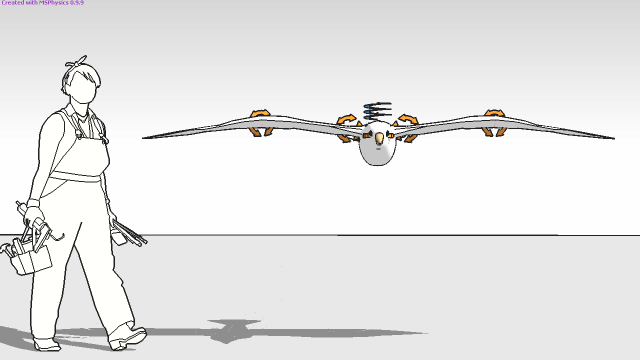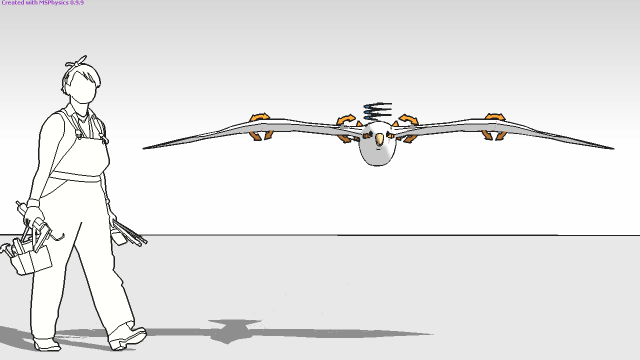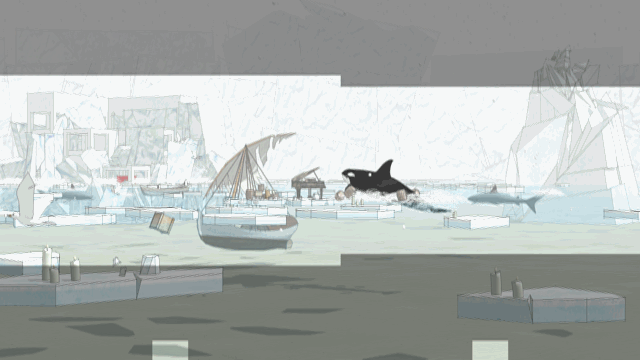MSPhysics 1.0.3 (16 October 2017)
-
Hi, Luckyvac,
Which of the joints are you referring to, a servo or a motor?
To increase the damping of a motor joint, simply select the desired motor joint, open MSPhysics UI, and increase the Damp parameter.
To increase the damping of a servo joint, that is decrease its angular rate, select the desired servo joint, open MSPhysics UI, and decrease the Angular Rate parameter.
Hope this helps,
Anton
-
@luckyvac My appologies for not responding any sooner. I am a bit busy. In short, it's possible to have the servo angle correspond to the table values at time t. The table with angles and times must be converted to a Ruby Hash and then the rest is easy. I will examine your model in depth soon and we'll see what can be done to get the guitar stringing.
@TheSniper Apparently there were a few reports about the dialog options not working properly on Mac OS X and that's not good. I will check it out soon.
@SynSuka3D The
joystickfunction accepts four symbols and each of them correspond to an axis on one of the joysticks:
joystick(:leftx)returns X position on left stick.
joystick(:lefty)returns Y position on left stick.
joystick(:rightx)returns X position on right stick.
joystick(:righty)returns Y position on right stick.The position ranges from -1.0 to 1.0.
Here is the documentation link to the function: http://www.rubydoc.info/github/AntonSynytsia/MSPhysics/MSPhysics/CommonContext#joystick-instance_method
I suggest you explore the MSPhysics scripting documentation for specs and other functions that might be useful, such as
joybutton(button). -
Hi Anton,
Thank you for your advice it works ... but ... I send you the left hand of the guitarist named "Pierrot".
I feel that the system comes into resonance when I connect several servo motors to each other.
What do you think ? How to decrease the resonance ?Merci

have a nice week end.

Lucky guitaR
-
@SynSuka3D Interesting, I will fix this.
-
@anton_s said:
@luckyvac My appologies for not responding any sooner. I am a bit busy. In short, it's possible to have the servo angle correspond to the table values at time t. The table with angles and times must be converted to a Ruby Hash and then the rest is easy. I will examine your model in depth soon and we'll see what can be done to get the guitar stringing.
@TheSniper Apparently there were a few reports about the dialog options not working properly on Mac OS X and that's not good. I will check it out soon.
@SynSuka3D The
joystickfunction accepts four symbols and each of them correspond to an axis on one of the joysticks:
joystick(:leftx)returns X position on left stick.
joystick(:lefty)returns Y position on left stick.
joystick(:rightx)returns X position on right stick.
joystick(:righty)returns Y position on right stick.The position ranges from -1.0 to 1.0.
Here is the documentation link to the function: http://www.rubydoc.info/github/AntonSynytsia/MSPhysics/MSPhysics/CommonContext#joystick-instance_method
I suggest you explore the MSPhysics scripting documentation for specs and other functions that might be useful, such as
joybutton(button).https://youtu.be/b0YBVqUhMdU xbox controller faill script ?
-
Add joystick(:rightz) and joystick(:leftz) for joy(RT) and joy(LT) please.
for xbox controler. -
@synsuka3d said:
Add joystick(:rightz) and joystick(:leftz) for joy(RT) and joy(LT) please.
for xbox controler.Roger that!
-
Hi, SynSuka3D,
I fixed it and added rightz/leftx commands.
You can download the WIP version here: https://drive.google.com/open?id=0B3qg8f4WrNdHUmE5OXNiWjQ0VzgYou can try out the joystick controller test model attached below.
Best regards,
Anton
-
Should make my question more precise:
The reason for the loose behaviour of the joints is the update rate in MSPhysics UI - Simulation - Update Rate = 1 (seems the best for my large model).
If I change this from 1 to 3, the servos remain more stable in the pivot but the spring no longer brings the steady up and down movement.
Have now tried to modify all settings at the Spring Joint, but do not get the desired result.
What can I do?
Thank you in advance, Anton!


-
Hi Anton and the community,
I think I have found the solution to control the damping of the servo motor. I worked on the geometry of "green" parts to decrease the sensitivity to the vibratory modes. As we can do in reality.
It's impressive !

Best regards.
luckyvac
-
Unfortunately, changing the Update Rate from 1 to 3 is not useful when camera, joints, emitter, etc. are based on scripts that use the OnUpdate function. Programmed objects become 3 times faster. The appearance of emitted objects no longer fits to the image rate. The weight of the emitted objects or the lifetime seems to change.
For the joints based on pivot points, an option independent of the Update Rate in the user interface seems to be useful for fixing at the pivot point. If this is possible... -
@Anton_S goood xbox controller Merci!
-
-
Platform: Sketchup 2017 on Mac 64 bit
Anton,
Got the update, (Thank you) I have not gone thru all the settings as of yet. But so far it appears to working as expected. Ill let you know as soon as I can get thru all the settings THANKS! -S -
SynSuka3d, like I said, you should reference the scripting documentation to see what each function does: http://www.rubydoc.info/github/AntonSynytsia/MSPhysics/MSPhysics/Body#set_omega-instance_method
-
my project

-
A little question regarding Export Replay to SkIndigo: The batch rendering doesn't save the frames complete rendered after the set Halt time but at the point of the last image update during the render process. This point can be minutes before the desired render time per frame. Is it an exporter question or should I ask in the Indigo forum?
-
@Faust, I don't know. I need to look deeper into that.
-
-
OK, thank you.
Have tested MSPhysics "Export Replay to Images" with the new SketchUp Make 2017 M2 (windows 7) and got a similar result as with M1 (windows 10) as mentioned in an older question.
The example is a GIF of exported frames with an original resolution 1920x1080.

Advertisement







